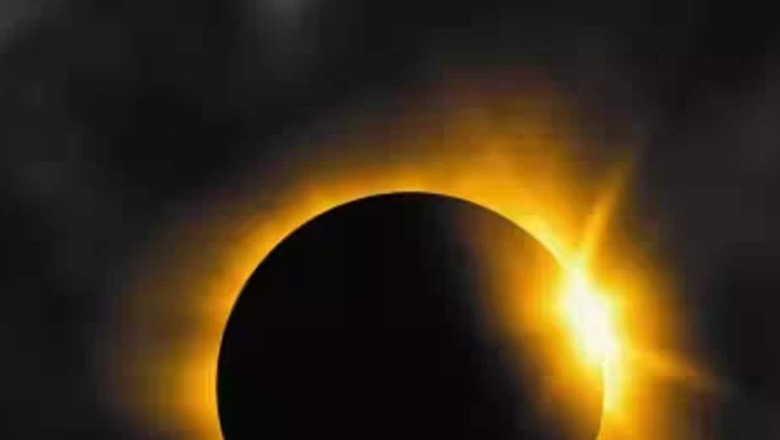
views
The Sun has entered its solar maximum period, a crucial phase of its cyclic activity. This announcement was made on October 15 by NASA, the National Oceanic and Atmospheric Administration (NOAA) and the Solar Cycle Prediction Panel. The solar maximum signifies that we are likely experiencing one of the more active periods within the Sun’s 11-year Solar Cycle.
What is the Solar Maximum?
Solar maximum is referred to as the heightened phase of the solar activity within a solar cycle in which sunspot count is high, and there is frequent occurrence of solar flares and coronal mass ejections (CMEs). During this period, the Sun’s magnetic field reorients itself completely, thus experiencing severe magnetic storms. There can also be many more groups of sunspots, with 20 or more easily visible at times. Sunspot is the relatively cool area on the photosphere of the Sun that is formed due to concentrated magnetic fields preventing the hot gas from flowing to the surface.
NASA and NOAA researchers have pointed out that even though solar maximum was officially declared, it may have started two years before. Moreover, the peak activity will continue for at least another year and estimates suggest that the solar activity may see an increased activity. This is of particular interest because there are predictions that we are likely to experience more geomagnetic storms and auroras in the near future.
More so, during solar maximum, there is an increased chance of geomagnetic storms since the CMEs interact with the Earth’s magnetic field. Such storms pose a menace to satellite services, communication and power and light company services. Lastly, they can increase auroral displays, thus more colourful northern and southern lights as charged particles from the sun influence the Earth’s atmosphere.
Jamie Favours, head of the Space Weather Program at NASA Headquarters in Washington, said in a statement that “during solar maximum, the number of sunspots, and therefore, the amount of solar activity, increases.”
It is crucial to understand that increased solar activity creates a possibility to research the Sun better. As Jamie Favors pointed out, this increased activity enables improved analysis of how our Sun impacts space weather. For now, researchers will be observing more aspects such as sunspot numbers in order to assess further effects of this solar maximum.
Scientists are assured that we are currently in a solar maximum phase, but identifying the mean solar activity will take time. The peak is usually evaluated based on data obtained using the 13-month smoothed sunspot number, which in turn needs data both before and following the peak. The Solar Cycle Prediction Panel earlier estimated that the peak would reach next year in July 2025, with a maximum of around 115 sunspots, but current observations indicate that we could be on course for even more.




















Comments
0 comment